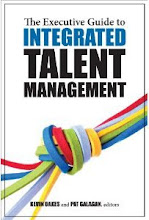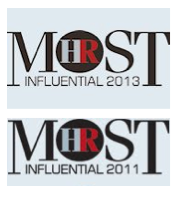 It’s been ASTD’s annual conference this week which has reminded me that I never completed my review of the ASTD / I4CP’s 2011 book, The Executive Guide to Integrated Talent Management to which I contributed a chapter (alongside Dave Ulrich, Ed Lawler, Marshall Goldsmith, Peter Cappelli and others).
It’s been ASTD’s annual conference this week which has reminded me that I never completed my review of the ASTD / I4CP’s 2011 book, The Executive Guide to Integrated Talent Management to which I contributed a chapter (alongside Dave Ulrich, Ed Lawler, Marshall Goldsmith, Peter Cappelli and others).
Mine is actually the next chapter after the earlier ones I have already reviewed outlining the general benefits of integrated talent management, and on the integration of learning with recruiting.
My chapter is on the integration of learning and compensation and rewards, and starts of with…
“Ensuring the alignment and integration of L&D and reward as well as other management policies, processes and practices is an important enabler to effective talent management. There is firstly a need for horizontal alignment – ensuring that both L&D and reward, along with other elements of the HR and management architecture, are linked together and support each other.
However, it is even more important for an organization to ensure vertical alignment, which it achieves from having both L&D and reward, and other processes, aligned with the overall business strategy, and its mission, vision, values and so on.
These vertical and horizontal linkages can help build HR, L&D and other processes around what an organization believes about people management and development – for example, what it thinks works in motivating and upskilling people and how these strategies can best be implemented…
For example… some organizations believe strongly in formal systems and structures whereas others prefer informal and social ways of operating. The first form of organization is likely to have set learning curricula for each grade and level supported by a Learning Management System. Organizations subscribing to more informal approaches are likely to put greater emphasis on opportunities for connecting with others in the organization and for self managed learning. An organization’s reward strategy should also be aligned with these approaches to learning. For example, a formal learning system is likely to work best when supported by a formal incentive programme and an informal or social approach to learning may work best when linked to a looser recognition programme allowing and encouraging managers and employees to express their appreciation for exceptional effort, skills and performance.
Karl-Heinz Oehler, VP Global Talent Management at Hertz then provides an example of the sort of problem which occurs when there isn’t this type of intgration in a more structured type of firm:
“Compensation & Rewards is interrelated with almost every functional HR domain, but its relationships with L&D is special, yet underestimated. It is special because L&D’s role is to enhance employee competence, to bring about behavioural change, and to develop employees’ ability to work more effectively. Yet development programs all too often fall short in producing the desired change – and not because these programs are badly designed or delivered. In fact, many of them receive very high ratings. So what was the problem?
Reviewing development programs at Hertz, especially those aimed at improving business results, highlighted the fact that employees were convinced that what they learned was right for the business. However, the C&R system was contrary to the principles learned and thus drove a different ehaviour. New behaviours can only be encouraged, implemented, and sustained if the employees practicing them are properly compensated and rewarded. This was one of the formidable challenges that Hertz L&D faced.”
Karl-Heinz goes on to describe some great example of how Hertz has tried to ensure better integration from this point.
However, despite what Karl-Heinz states, I don’t think C&R does have much of a special relationships with L&D – certainly not to the same extent as between C&R and Performance Management, and PM and L&D.
I’m going to continue (and this time, complete) reviewing / providing extracts from these other relationships / the other chapters of the book over the next couple of weeks.
- Consulting - Research - Speaking - Training - Writing
- Strategy - Talent - Engagement - Change and OD
- Contact me to create more value for your business
- jon [dot] ingham [at] strategic [dash] hcm [dot] com
.






























0 comments:
Post a Comment
Please add your comment here (email me your comments if you have trouble and I will put them up for you)